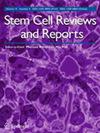环状CRISPR编辑人类多能干细胞用于疾病建模。
IF 4.5
3区 医学
Q2 CELL & TISSUE ENGINEERING
引用次数: 0
摘要
CRISPR系统已广泛应用于人类多能干细胞(hPSC)疾病建模。环状RNA可以有效降低RNA的免疫原性,提高RNA的稳定性,从而有助于体内DNA编辑。在本研究中,我们简要描述了循环引导RNA和CRISPR碱基编辑元件并利用它们建立干细胞疾病模型的过程。我们的工作为构建基因点编辑细胞系提供了一步一步的指导,为疾病建模和治疗研究提供了可靠的、低免疫原性的替代方案。本文章由计算机程序翻译,如有差异,请以英文原文为准。
Circular CRISPR Edits Human Pluripotent Stem Cells for Disease Modeling.
The CRISPR system has been widely used for human pluripotent stem cell (hPSC) disease modeling. Circular RNA can effectively reduce RNA immunogenicity and improve RNA stability, thus contributing to in vivo DNA editing. In this study, we briefly describe the process of circularizing guide RNA and CRISPR base editing elements and using them to establish stem cell disease models. Our work provides step-by-step guidance for constructing gene point editing cell lines, offering a reliable, low-immunogenic alternative for disease modeling and therapeutic research.
求助全文
通过发布文献求助,成功后即可免费获取论文全文。
去求助
来源期刊

Stem Cell Reviews and Reports
医学-细胞生物学
CiteScore
9.30
自引率
4.20%
发文量
0
审稿时长
3 months
期刊介绍:
The purpose of Stem Cell Reviews and Reports is to cover contemporary and emerging areas in stem cell research and regenerative medicine. The journal will consider for publication:
i) solicited or unsolicited reviews of topical areas of stem cell biology that highlight, critique and synthesize recent important findings in the field.
ii) full length and short reports presenting original experimental work.
iii) translational stem cell studies describing results of clinical trials using stem cells as therapeutics.
iv) papers focused on diseases of stem cells.
v) hypothesis and commentary articles as opinion-based pieces in which authors can propose a new theory, interpretation of a controversial area in stem cell biology, or a stem cell biology question or paradigm. These articles contain more speculation than reviews, but they should be based on solid rationale.
vi) protocols as peer-reviewed procedures that provide step-by-step descriptions, outlined in sufficient detail, so that both experts and novices can apply them to their own research.
vii) letters to the editor and correspondence.
In order to facilitate this exchange of scientific information and exciting novel ideas, the journal has created five thematic sections, focusing on:
i) the role of adult stem cells in tissue regeneration;
ii) progress in research on induced pluripotent stem cells, embryonic stem cells and mechanism governing embryogenesis and tissue development;
iii) the role of microenvironment and extracellular microvesicles in directing the fate of stem cells;
iv) mechanisms of stem cell trafficking, stem cell mobilization and homing with special emphasis on hematopoiesis;
v) the role of stem cells in aging processes and cancerogenesis.
 求助内容:
求助内容: 应助结果提醒方式:
应助结果提醒方式:


